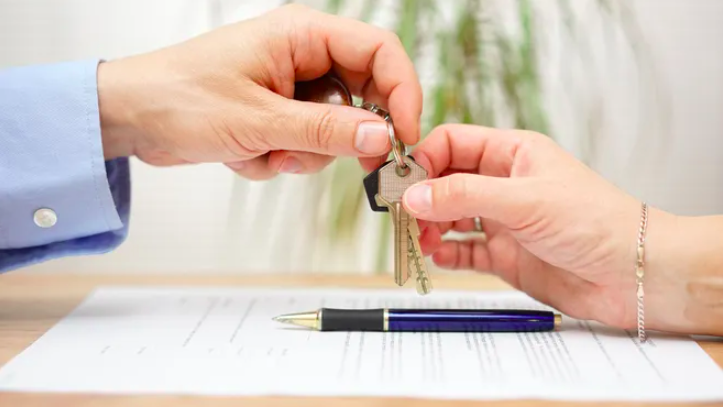
As Ron and I get ready for Paper Power (June 8-10), EXCITEMENT is the word that comes to mind: Excitement that stems from all of the opportunities we have before us, excitement about being able to contribute to your education and ultimate success, and, finally, excitement to be able to share some of the techniques I’ve learned over the past 33 years in the finance arena to help you put together more real estate deals.
When Ron and I originally put together Paper Power those many long years ago (yes, we’re both proverbial “dinosaurs!), it was with the caveat that we would discuss not only what we do, but specifically, HOW we do it. And in this class, you’ll learn various techniques as well as real-world examples, and we’ll walk you through, step-by-step, how to implement them. And finally, we’ll cover strategies that are specific to today’s marketplace, rather than those that are “old and cold;” (those are the ones that still look good on paper, but simply aren’t applicable to today’s real estate game).
We’ll be discussing everything from how to supplement your real estate income by buying existing mortgages to creating your own. You’ll learn about using defaulted paper as a way to control real estate, and the availability of certain conventional mortgage programs that will give you alternative ways of putting together deals. And finally, throughout the class, as in real estate, you’ll learn the benefits of ownership vs. control, and the advantages of doing the deal for yourself, rather than representing others (the old RE Agent vs. RE Investor Theory – one of them makes a lot more $$).
So…let’s get started!
In this two-part article, we’ll look at a technique that will benefit you in several ways: First of all, when you buy a property, you’ll be able to put cash back into your pocket! Second, when you sell using this technique, you’ll open it up to a wider array of potential buyers, ones who will have less closing costs, and won’t have to jump through the hoops of conventional financing! Even better, (and this is number three), you won’t have to worry about those annoying lender requirements like provable income and chain of title!
The technique is called a simultaneous closing, not to be confused with a double closing. For many of us, a double closing is where one buys a property, then sells it, all at the same time. Call it a “flip” if you will; the bottom line is that the property changes hands twice at the same closing. A simultaneous closing, on the other hand, involves two steps:
Step 1 is where the property is sold, and the seller carries back a mortgage (owner financing). In Step 2, that newly-created mortgage is sold to a third party, whose cash is then used to pay off any underlying liens, closing costs, profit, etc. Please note: THE PROCEEDS ARE HANDLED THE SAME WAY AS THOSE FROM A TRADITIONAL LOAN. And…the closing procedure is also similar.
And while we’re on the subject, please note another very important item. There must be at least THREE separate parties in this transaction: a buyer, a seller, and a notebuyer. Remember this, and you’ll never again confuse refinancing a property with a
simultaneous closing. The MUST be a sale of property, there MUST be three separate parties.
How does this help you?
Let’s look at a real world example: John, a Florida attorney, wanted to buy a $200K house from Jane. He wanted a no-qualifying loan, no-money down, interest rate below 10%, and didn’t want to have to state any income or assets. To make matters more complicated, John had marginal credit, so he didn’t qualify for a no-doc loan with a traditional lending institution.
Jane, on the other hand, provided the saving grace in this deal, because she only required $50K down, and was willing to receive the rest in payments over time. Granted, John didn’t have the $50K, but here is where we came in: We simply guided Jane in creating a $55,000 1st lien note that we purchased at the closing table for a discounted price of $50K. She carried a 2nd lien for $145K.
John didn’t have to jump through the hoops of conventional lending, and got the terms he wanted. He paid two payments every month: the 1st lien payment came to us (because we purchased the note), and the 2nd lien payment went to Jane. He got into his property for no money, and his closing costs were minimal. Jane got her $50K, and monthly payments. We (my company) got a high-yielding investment.
Sound simple? It really is, once you understand the nuances of both seller financing and the secondary lending market. Mortgages are bought and sold daily; banks sell in large amounts (pools), and private sellers sell individual notes. The net effect, however, is the same: cash is exchanged for the right to receive cash flow. The only difference in the private-seller market is that sellers don’t have to sell the whole note. Instead, they can sell a portion of the note (called a partial sale), which opens up this technique to even more uses!
Oh, and one last thing: Could John have put money into his pocket at closing using this technique? You bet! However…this column has limited space, so you’ll need to wait for the next installment, where we’ll also discuss how to create a note (either to buy or sell a house) for maximum profit!
Until then…happy investing!






